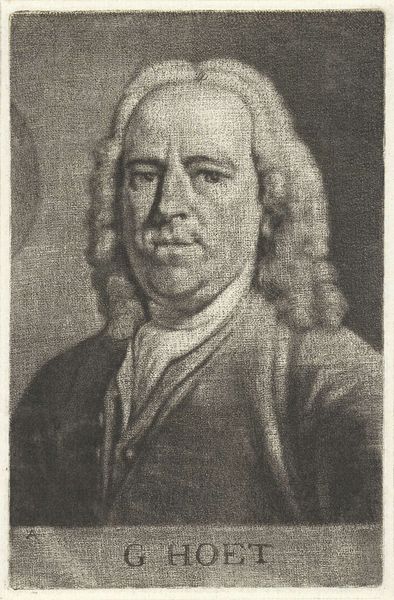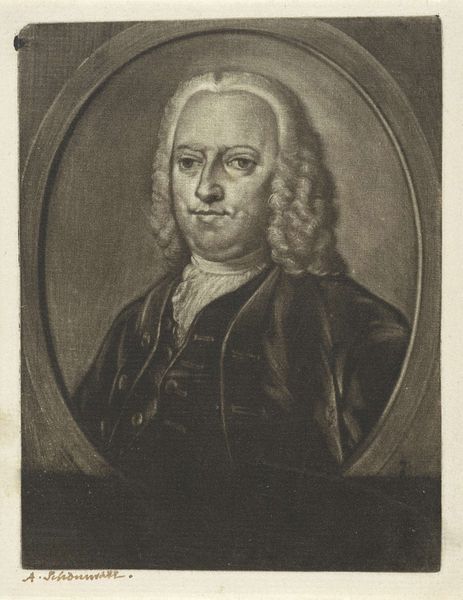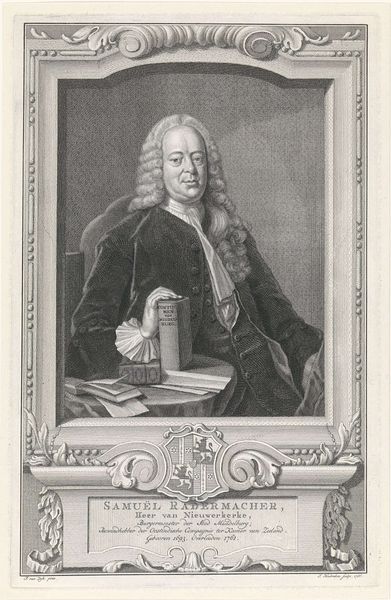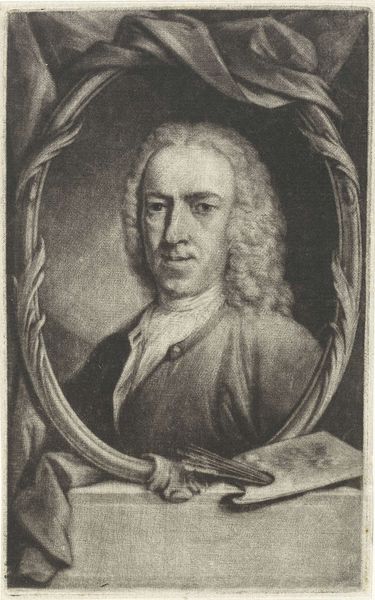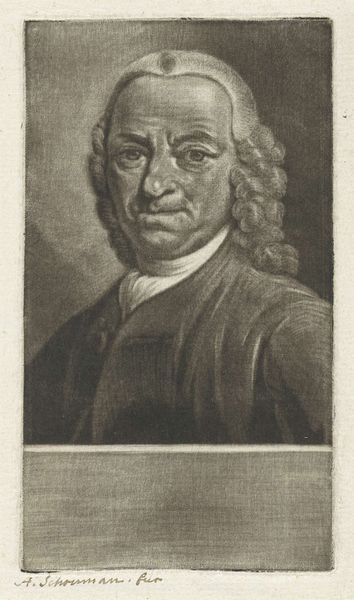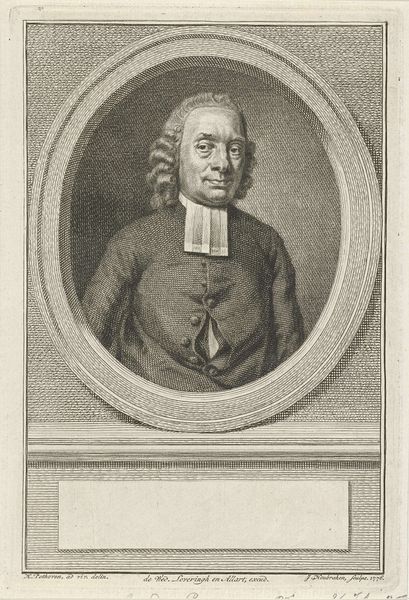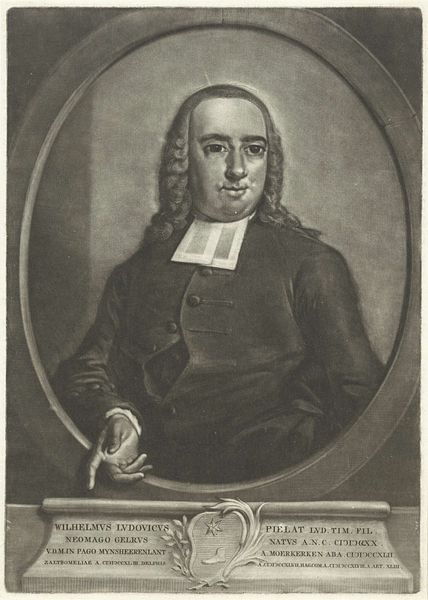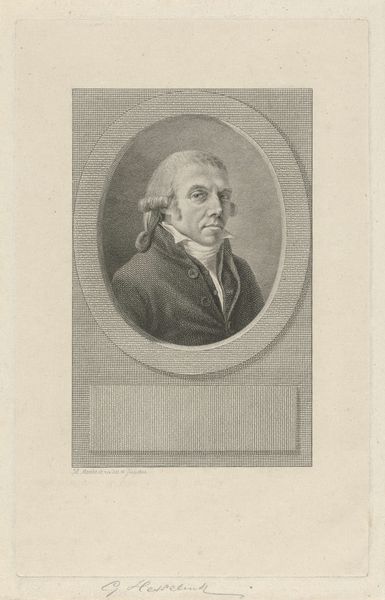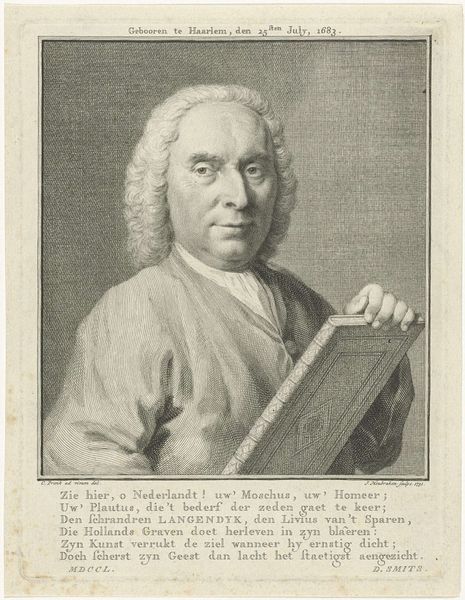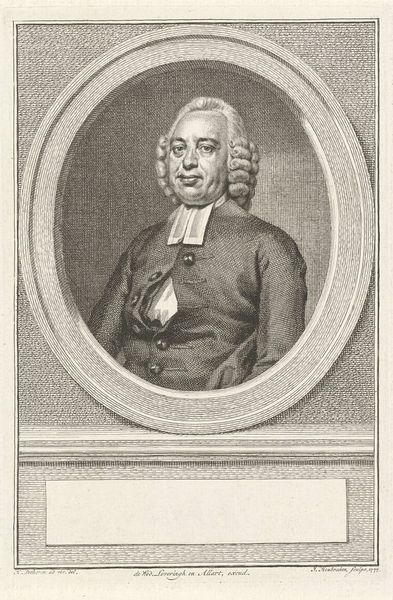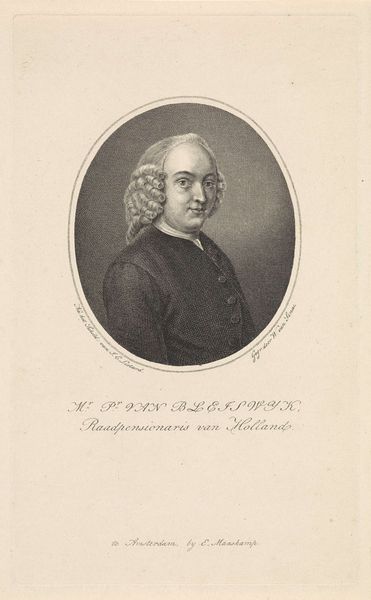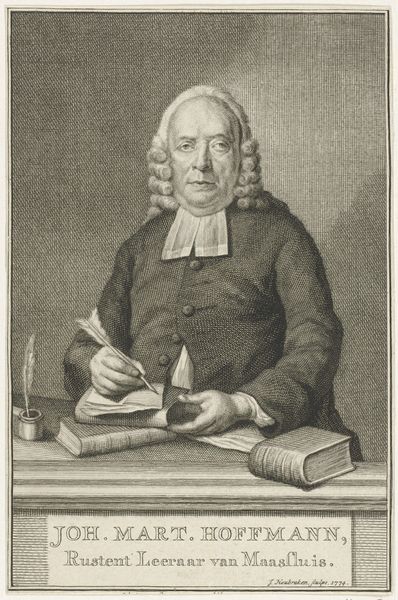
Dimensions: height 200 mm, width 160 mm
Copyright: Rijks Museum: Open Domain
Editor: Here we have Aert Schouman's "Portrait of Gerard Hoet," dating sometime between 1768 and 1792, held at the Rijksmuseum. The composition appears very somber, a serious mood, all in muted grayscale tones, very classical. How do you interpret the form and visual choices in this print? Curator: Indeed, the formal aspects are paramount. Note how Schouman manipulates light and shadow, a stark chiaroscuro, to sculpt Hoet's features and imbue him with a sense of gravitas. The textures too are very compelling, observe the smoothness of the skin against the slightly coarse rendering of the clothing. How does the palette hanging above and behind Hoet function? Editor: The palette in the top left is interesting—I see it echoing the sitter’s shape, while visually indicating Hoet's own profession as a painter. Its placement seems to draw attention to its form more than its function. Curator: Precisely! And the texture differs noticeably to set this floating form apart. Moreover, consider the gaze of Hoet, directed outwards. Its force structures our experience of the piece. This use of directed gaze, the textures, the chiaroscuro and even the tonal range are not mere representational choices; they actively construct the viewer's perception of power and artistic intellect, don’t you think? Editor: Absolutely! I hadn't considered how actively these formal techniques work to shape our interpretation. The strategic interplay of visual elements clearly conveys much more than just a likeness. Curator: Yes, and it underscores the enduring power of formalism in understanding the artistry inherent within the print. Editor: This really helps clarify how a close analysis of form can unlock deeper understanding. Thanks!
Comments
No comments
Be the first to comment and join the conversation on the ultimate creative platform.
